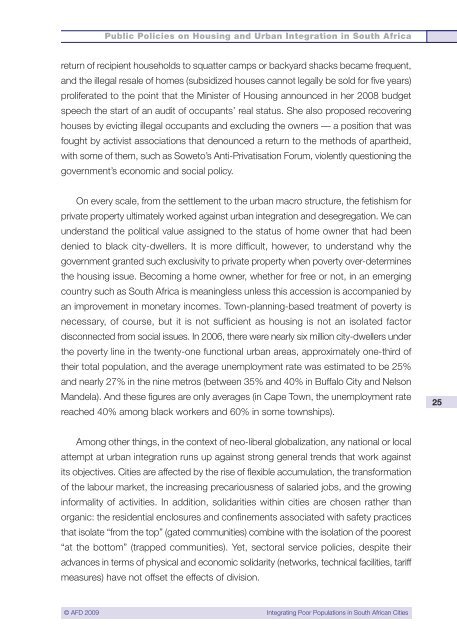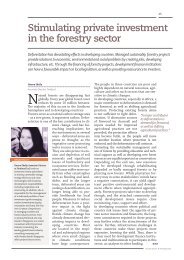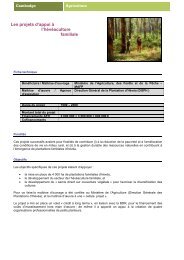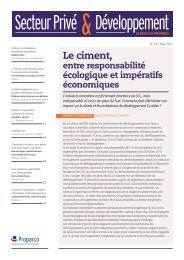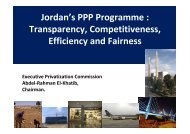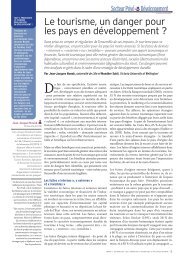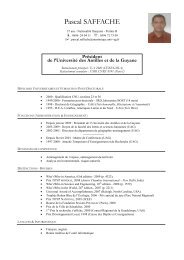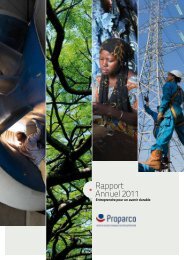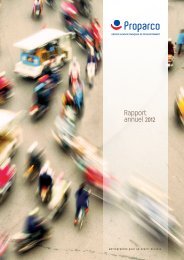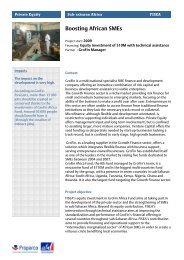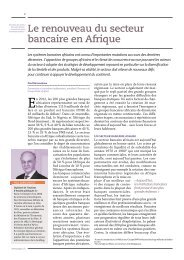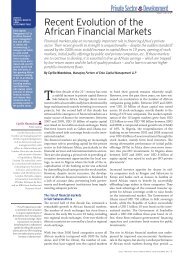Integrating Poor Populations in South African Cities - Agence ...
Integrating Poor Populations in South African Cities - Agence ...
Integrating Poor Populations in South African Cities - Agence ...
You also want an ePaper? Increase the reach of your titles
YUMPU automatically turns print PDFs into web optimized ePapers that Google loves.
Public Policies on Hous<strong>in</strong>g and Urban Integration <strong>in</strong> <strong>South</strong> Africa<br />
return of recipient households to squatter camps or backyard shacks became frequent,<br />
and the illegal resale of homes (subsidized houses cannot legally be sold for five years)<br />
proliferated to the po<strong>in</strong>t that the M<strong>in</strong>ister of Hous<strong>in</strong>g announced <strong>in</strong> her 2008 budget<br />
speech the start of an audit of occupants’ real status. She also proposed recover<strong>in</strong>g<br />
houses by evict<strong>in</strong>g illegal occupants and exclud<strong>in</strong>g the owners — a position that was<br />
fought by activist associations that denounced a return to the methods of apartheid,<br />
with some of them, such as Soweto’s Anti-Privatisation Forum, violently question<strong>in</strong>g the<br />
government’s economic and social policy.<br />
On every scale, from the settlement to the urban macro structure, the fetishism for<br />
private property ultimately worked aga<strong>in</strong>st urban <strong>in</strong>tegration and desegregation. We can<br />
understand the political value assigned to the status of home owner that had been<br />
denied to black city-dwellers. It is more difficult, however, to understand why the<br />
government granted such exclusivity to private property when poverty over-determ<strong>in</strong>es<br />
the hous<strong>in</strong>g issue. Becom<strong>in</strong>g a home owner, whether for free or not, <strong>in</strong> an emerg<strong>in</strong>g<br />
country such as <strong>South</strong> Africa is mean<strong>in</strong>gless unless this accession is accompanied by<br />
an improvement <strong>in</strong> monetary <strong>in</strong>comes. Town-plann<strong>in</strong>g-based treatment of poverty is<br />
necessary, of course, but it is not sufficient as hous<strong>in</strong>g is not an isolated factor<br />
disconnected from social issues. In 2006, there were nearly six million city-dwellers under<br />
the poverty l<strong>in</strong>e <strong>in</strong> the twenty-one functional urban areas, approximately one-third of<br />
their total population, and the average unemployment rate was estimated to be 25%<br />
and nearly 27% <strong>in</strong> the n<strong>in</strong>e metros (between 35% and 40% <strong>in</strong> Buffalo City and Nelson<br />
Mandela). And these figures are only averages (<strong>in</strong> Cape Town, the unemployment rate<br />
reached 40% among black workers and 60% <strong>in</strong> some townships).<br />
25<br />
Among other th<strong>in</strong>gs, <strong>in</strong> the context of neo-liberal globalization, any national or local<br />
attempt at urban <strong>in</strong>tegration runs up aga<strong>in</strong>st strong general trends that work aga<strong>in</strong>st<br />
its objectives. <strong>Cities</strong> are affected by the rise of flexible accumulation, the transformation<br />
of the labour market, the <strong>in</strong>creas<strong>in</strong>g precariousness of salaried jobs, and the grow<strong>in</strong>g<br />
<strong>in</strong>formality of activities. In addition, solidarities with<strong>in</strong> cities are chosen rather than<br />
organic: the residential enclosures and conf<strong>in</strong>ements associated with safety practices<br />
that isolate “from the top” (gated communities) comb<strong>in</strong>e with the isolation of the poorest<br />
“at the bottom” (trapped communities). Yet, sectoral service policies, despite their<br />
advances <strong>in</strong> terms of physical and economic solidarity (networks, technical facilities, tariff<br />
measures) have not offset the effects of division.<br />
© AFD 2009 <strong>Integrat<strong>in</strong>g</strong> <strong>Poor</strong> <strong>Populations</strong> <strong>in</strong> <strong>South</strong> <strong>African</strong> <strong>Cities</strong>


